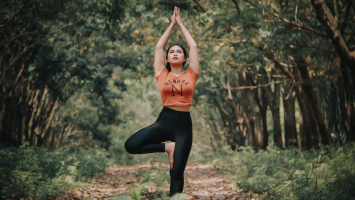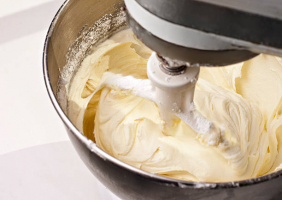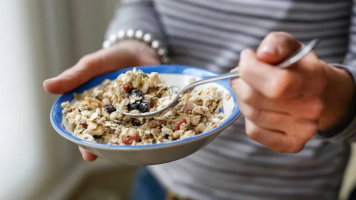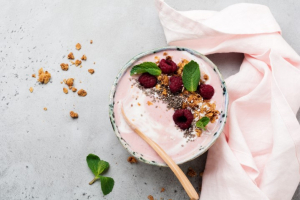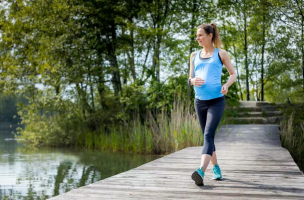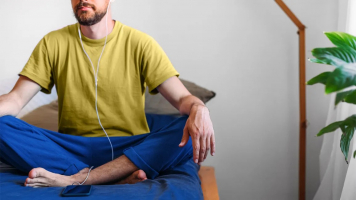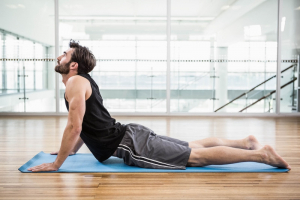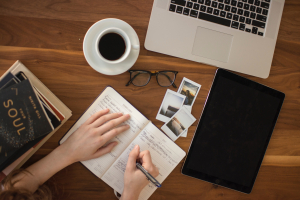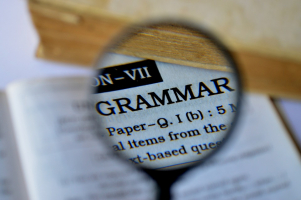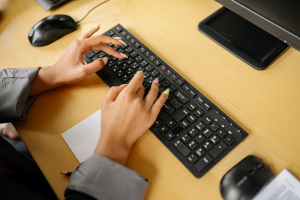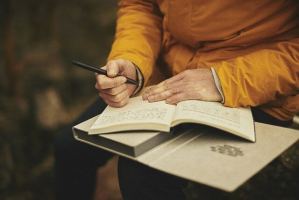Top 9 Exercises to Improve Your Posture
A person's posture refers to how their body is positioned while they are sitting, standing, lying down, or engaged in other activities. Researchers have ... read more...connected poor posture to a number of uncomfortable health problems and a greater chance of injury, particularly while exercising. Below are some of the Exercises to Improve Your Posture!
-
Your spine, glutes, and hamstrings are stretched and lengthened in this resting position. The child's pose helps the neck and lower back tension release.
How to do it:
- Knees should be touching, big toes should be in touch, and heels should be splayed out to the side while you sit on your shinbones.
- Walk your hands out in front of you as you bend forward at the hips.
- Go return to lowering your hips toward your feet. If your thighs won't go all the way down, support them with a pillow or folded blanket.
- Turn your head to the side or lay your forehead gently on the floor.
- Keep your arms out in front of you or put them on your body.
- Inhale deeply into your waist and ribcage's back.
- For up to five minutes, relax in this posture while continuing to inhale deeply.
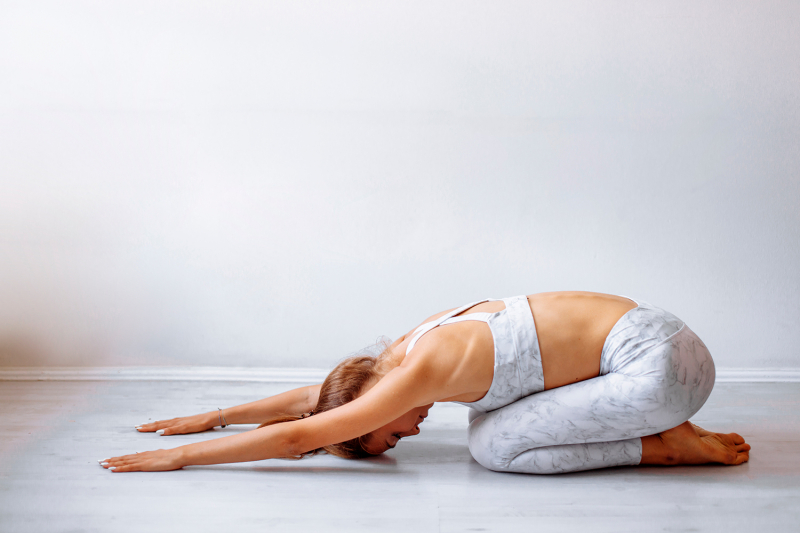
Child’s pose Child’s pose -
By doing this standing stretch, you may relieve back, hamstring, and gluteal strain. It extends your legs and hips as well. You should feel the entire backside of your body stretching and opening up as you do this stretch.
How to do it:
- Your heels should be slightly apart when you stand with your big toes in touch.
- Fold forward at the hips while lowering your hands to your hips.
- Put your hands drop to the ground. Go as far as you can without considering whether your hands don't touch the ground.
- Allow your spine to stretch as you slightly bend your knees and relax the joints in your hips.
- Allow your head to fall gently to the floor while tucking your chin into your chest.
- Remain in this pose for up to 1 minute.
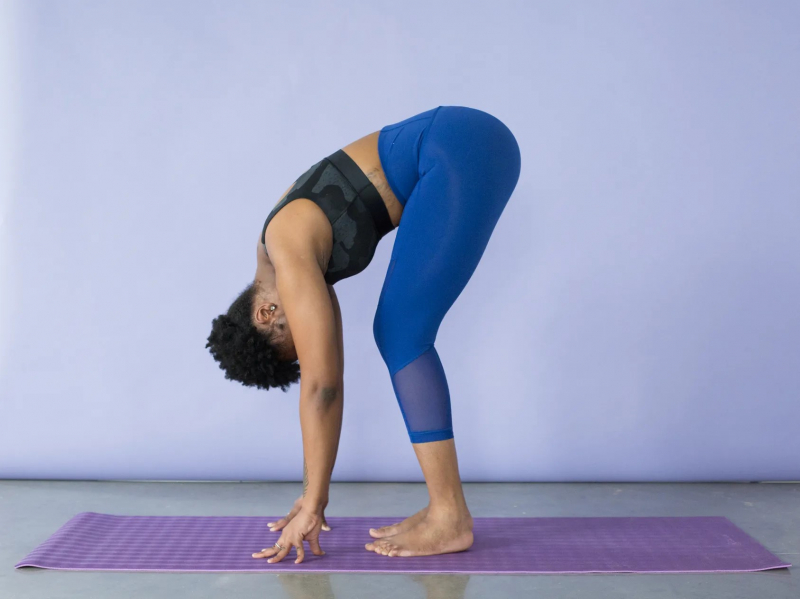
Forward fold Forward fold -
Your spine is stretched and stretched while you do cat cow. It also helps to increase blood circulation while easing stress in your neck, shoulders, and chest.
How to do it:
- Starting from a position of hands and knees, place your wrists below your shoulders and your knees below your hips.
- Imagine the spine as a line that runs directly from the shoulders to the hips. Inhale to look up, dropping your abdomen down toward the ground as you extend your spine.
- Exhale and arch your spine toward the ceiling and tuck your chin into your chest.
- Continue this movement for at least 1 minute.
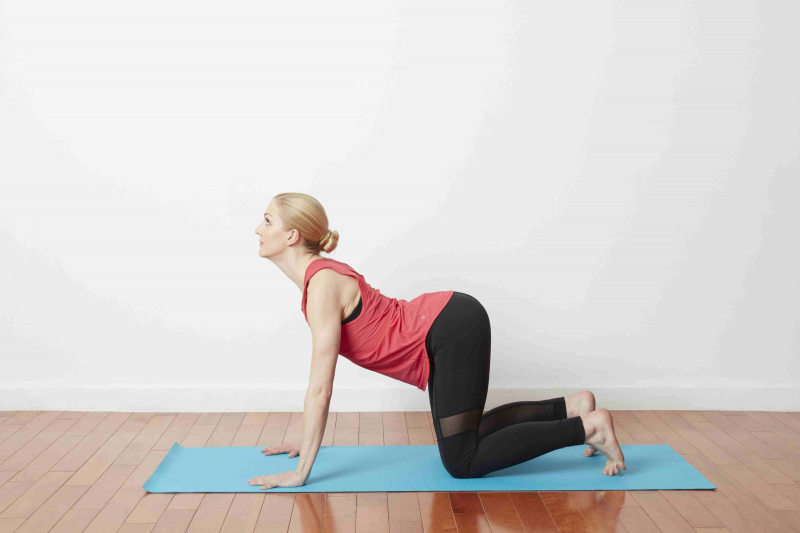
Cat cow Cat cow -
Standing while doing the cat-cow stretch aids in releasing tension in your back, hips, and glutes. This pose is a simple stretch that improves shoulder and hip flexibility in older adults.
How to do it:
- With your knees slightly bent, stand with your feet about hip-width apart.
- Put your hands on your thighs or extend them out in front of you.
- Round your spine, bring your chin toward your chest and lengthen your neck.
- Then lift your chest, turn your spine the other way, and look up.
- Five breaths should be maintained in each posture.
- For a few minutes, keep moving in this manner.
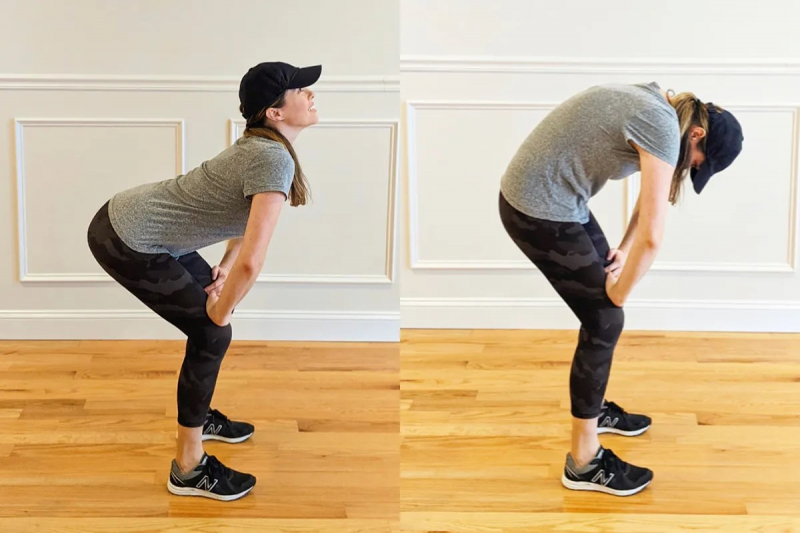
Standing cat cow Standing cat cow -
Your chest can open up and stretch thanks to this workout. This is especially helpful if you spend most of your day sitting down, which causes your chest to naturally inwardly shift. You may stand up straighter by strengthening your chest.
How to do it:
- Stand with your feet about hip-width apart as you stand.
- With your hands pressed together, extend your arms behind you and interlace your fingers. If your hands can't touch each other, grab a towel.
- Look straight ahead and maintain a straight spine, neck, and head.
- Take a deep breath in as you raise your hands to the floor and rise your chest to the ceiling.
- Hold this position for five breaths while taking deep breaths.
- Relax for a while.
- Repeat at least 10 times.
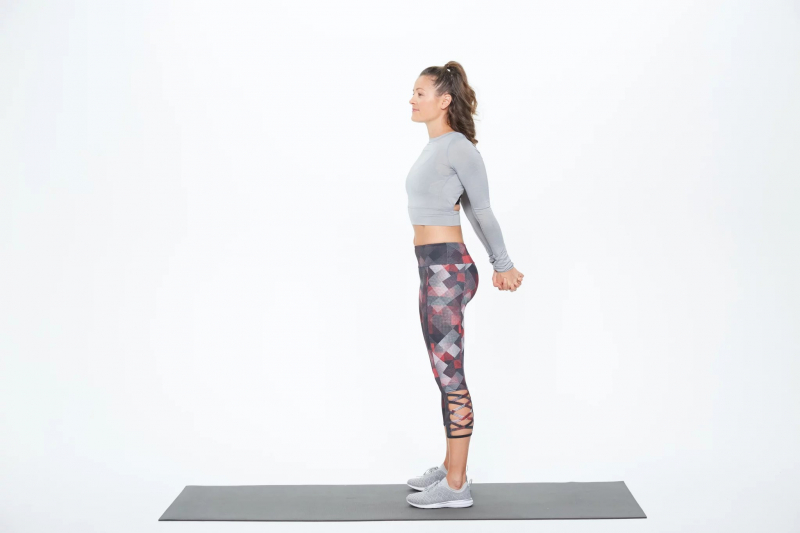
Chest opener Chest opener -
The high plank pose strengthens your shoulders, glutes, and hamstrings while relieving pain and stiffness throughout your body. Additionally, it helps with the development of core and back strength and balance, all of which are crucial for good posture.
How to do it:
- Begin by getting down on all fours on the floor with hands stacked directly under shoulders and knees bent and stacked directly under hips.
- Lift your heels, raise your hips, and straighten your legs.
- Set your back straight and tighten your arm, leg, and abdominal muscles.
- Lengthen your neck, relax your throat, and lower your eyes to the ground.
- Make careful to maintain your shoulders back and your chest open.
- Hold this posture for around one minute.
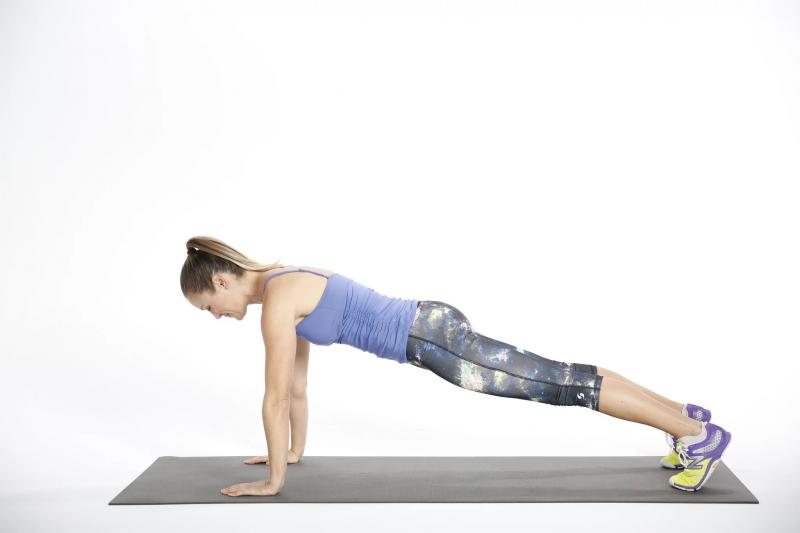
High plank High plank -
Vasisthasana (Side Plank Pose), which is both joyful and beautiful, is a powerful arm and wrist strengthener. You will maintain a straight posture with your body on your side, supported only by one arm and the side of one foot.
How to do it:
- Bring your left hand slightly toward the center while doing a high plank.
- Lift your hips, stack your ankles, and shift your weight to your left hand.
- Your right hand should be put on your hip or raised upwards toward the ceiling.
- For further support, you might bend your left knee to the ground.
- As you hold this position, engage your glutes, side body, and abdominals.
- From your head to your heels, align your body in a straight line.
- Look straight ahead of you or up toward your hand.
- For up to 30 seconds, maintain this posture.
- Repeat on the opposite side.
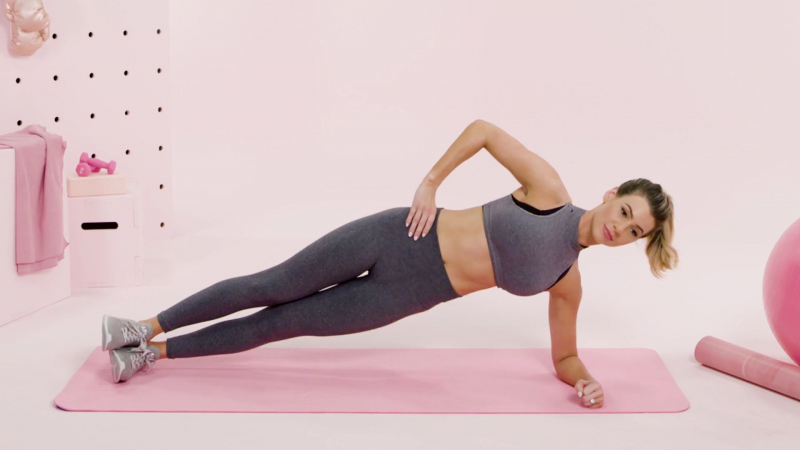
Side plank Side plank -
You may use this forward bend as a resting pose to balance your body. The downward-facing dog pose strengthens and aligns your back muscles while easing back pain. Practicing it regularly helps your posture to get better.
How to do it:
- From the Table position, tuck the toes under, press into the hands and begin to lift the hips up towards the ceiling.
- Bring your sitting bones up toward the ceiling by lifting your knees and hips.
- Lengthen your spine and slightly bend your knees.
- Either keep your chin completely tucked into your chest or keep your ears in line with your upper arms.
- Maintain a stranglehold with your hands while keeping your heels up.
- Hold this position for up to a minute.
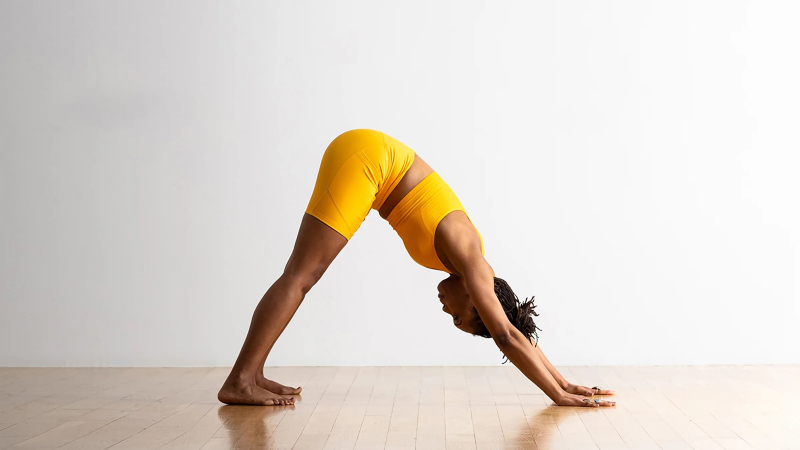
Downward-facing dog Downward-facing dog -
Pigeon Pose is a yoga asana (pose or position) that aids hip opening and lower back pain relief. Although it may be a great way to stretch your muscles and increase flexibility, it's crucial to do the move correctly to avoid strain or injury.
How to do it:
- Get down on all fours, your hands a little bit in front of your shoulders, and your knees just below your hips.
- With your right foot angled out to the left, bend your right knee and put it behind your right wrist.
- Rest the outside of your right shin on the ground.
- Straighten your left knee, slide your leg back, and put your left thigh on the ground.
- Make sure your left leg is straight and extended back (and not to the side).
- With your arms up in front of you, slowly lower your torso to rest on your inner right thigh.
- For up to a minute, maintain this position.
- Lifting your body and moving your hands back toward your hips can help you slowly release the position.
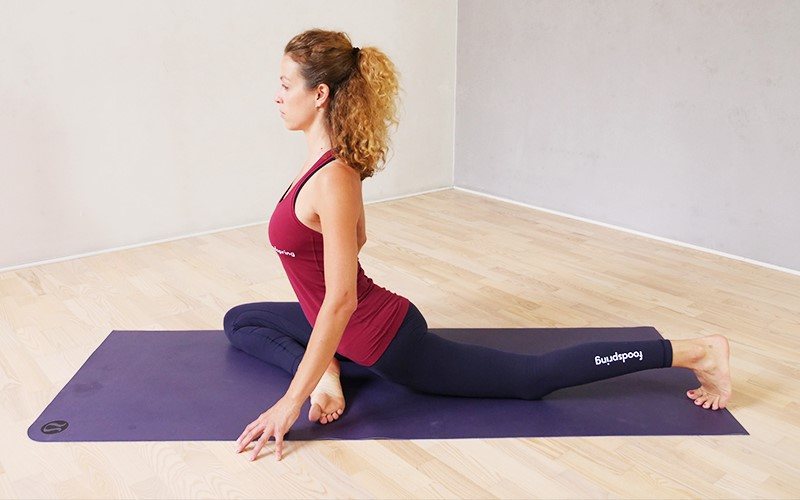
Pigeon pose Pigeon pose











